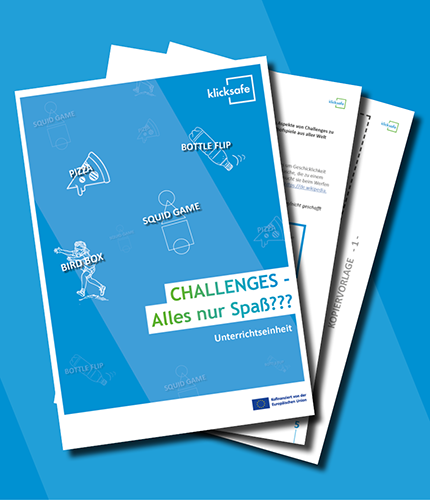Fires in school toilets - info for teachers and parents on dangerous challenges
What are challenges?
While people used to talk about "tests of courage," the English term "challenge" has now become established in this country as well. This collective term is used on the Internet to refer to a wide range of tests of courage, skills or sporting challenges. Online challenges are not only entertaining for children and young people to watch, they also invite them to take part. While many challenges on YouTube and TikTok are primarily fun, there are also always dangerous trends.
What can schools do?
Our teaching unit "Challenges - All in good fun?" offers educational professionals ideas for working on the topic of challenges with children and young people. For example, they can use an exercise to assess different challenges and discuss the problematic aspects of such challenging games with students. Finally, they can collect examples of positive, cooperative challenges with the group.
Download: Teaching unit Challenges - All in good fun???
Closely related to challenges are so-called pranks. Here, pranks are played and filmed with a hidden camera. This can be fun, but it can also be dangerous to oneself or others. The teaching unit "Pranks - All in good fun???" encourages students to reflect together on which pranks are harmless and where boundaries are crossed.
Download: Teaching unit "Pranks - All in good fun?
What can parents do?
Parents can support children and young people in correctly assessing the dangers of challenges:
- Stay in touch with children and young people to find out which dares are currently in vogue.
- Support children and young people in recognizing and correctly assessing risks.
- Encourage children and young people to say "no" andnot to give in to peer pressure.
- Communicate that spreading dangerous challenges is also problematic because it endangers others.
- Do not condemn challenges across the board and help interested children and young people to find safe challenges.
Further information
- klicksafe-News: Self-endangerment on the net - problematic challenges and tests of courage
- jugendschutz.net: Dangerous trends on the net
- jugendschutz.net: Call for theft and vandalism in schools
- ZDF logo! Challenge funny or not?
- klicksafe news: Squid Game: What parents need to know about the popular Netflix series

